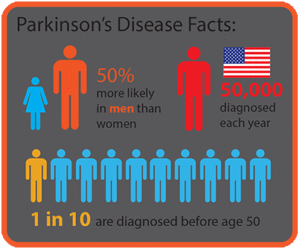There are other disorders like it, Alzheimer’s for example, that share an important trait — they arise when the body’s aging cells stop doing what they are supposed to do.
For many of these conditions, there are no cures, just treatments designed to slow the progression, where possible. But we may soon be looking at new treatment options developed through mitochondrial genetics and the study of aging.
The degeneration of aging cells is related to abnormalities in power plant organelles called mitochondria. In normal cell function, these mitochondria deteriorate over time and are eventually ejected from the cell.
Over the past few decades, researchers have discovered evidence that mitochondria become dysfunctional because of mutations in their DNA. (Mitochondrial DNA, or mtDNA, is separate from the DNA comprising the chromosomes of a cell’s nucleus.) The dysfunction, in turn, is connected to cellular aging and the onset of degenerative diseases. There are two new developments in this area of research.
The first involves the realization that while certain mtDNA mutations contribute to the disruption of mitochondrial function, there are mutations in other mitochondrial genes that prevent the cell from removing the dysfunctional mitochondria. Essentially, the cell loses the ability to perform its own quality control.
“We know that increased rates of mtDNA mutation cause premature aging,” said Bruce Hay, Professor of biology and biological engineering at the California Institute of Technology. “This, coupled with the fact that mutant mtDNA accumulates in key tissues such as neurons and muscle that lose function as we age, suggests that if we could reduce the amount of mutant mtDNA, we could slow or reverse important aspects of aging.”
This brings us to the second major development relevant to mitochondria in disease — that genetic technology is now at a point where the targeted removal of the problem mitochondrial genes can become the basis for clinical intervention. This is the implication of research that Hay and colleagues both at Caltech and the University of California at Los Angeles described in a paper published in the journal Nature Communications.
Fixing body tissues by knocking out genes that prevent bad mitochondrial from being ousted in a timely fashion might sound like science fiction, but that’s where things are going and it’s part of a growing trend of what’s being described as mitochondrial medicine.
With degenerative diseases, the standard treatment involves the replacement of the physiologic function of the diseased tissue. In Parkinson’s disease, this often means replacing a neurotransmitter called dopamine in a part of the brain where it’s lacking, due to degeneration of dopamine-making cells. While this works well in the initial stages of the disease, it gradually becomes less effective.
There are two new strategies. One is to regenerate the failing tissue using stem cells. The other is gene therapy in which the patients’ own brain cells are given the ability to make something they don’t usually make. For instance, the part of the brain that usually receives dopamine is given the ability to make its own dopamine.
Neurosurgeons are actually quite good at injecting agents into specific regions of the brain with extreme precision. This is why gene therapy and stem cell therapy are showing promise. But this also means there’s a capability to deliver agents that could affect mitochondria. It means that it should be possible in the near future to manage degenerative diseases with a third advance treatment prong: restoring the cell’s ability to expel failing mitochondria.
A version of this article originally appeared on the GLP on January 19, 2017.
David Warmflash is an astrobiologist, physician and science writer. Follow him on Twitter @CosmicEvolution































